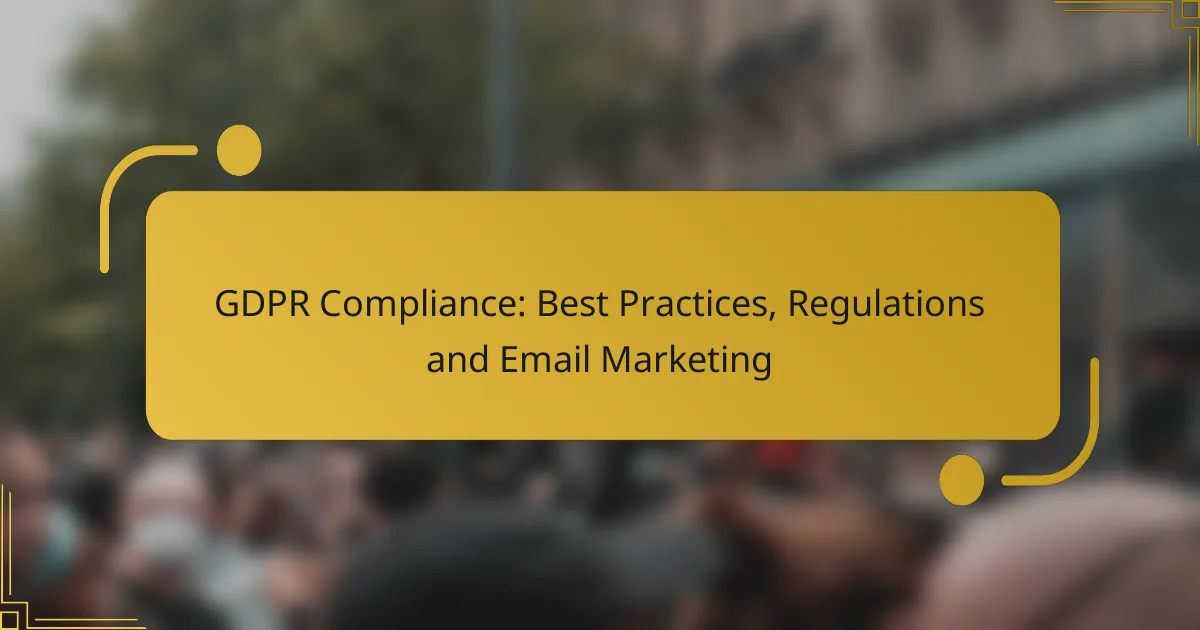Email open rates are a critical metric in email marketing, reflecting the effectiveness of engagement strategies and the relevance of content. By focusing on personalization, optimizing subject lines, and employing A/B testing, businesses can significantly enhance their open rates. Understanding the factors that influence these rates is essential for improving lead generation and overall marketing success.

How can you improve email open rates in the US?
Improving email open rates in the US involves employing strategies that enhance engagement and relevance. Key tactics include personalization, optimizing subject lines, adjusting timing and frequency, conducting A/B testing, and implementing effective segmentation.
Personalization techniques
Personalization techniques can significantly boost email open rates by making recipients feel valued. Use the recipient’s name in the subject line or greeting and tailor content based on their preferences or past interactions.
Consider segmenting your audience based on demographics or behavior to deliver more relevant messages. For example, a retailer might send tailored promotions based on previous purchases, increasing the likelihood of opens.
Subject line optimization
Optimizing subject lines is crucial for capturing attention and encouraging opens. Aim for concise, compelling phrases that convey urgency or curiosity, ideally between 6-10 words.
Incorporate action-oriented language and avoid spammy words that could trigger filters. Testing different styles can reveal what resonates best with your audience, such as questions versus statements.
Timing and frequency adjustments
Timing and frequency adjustments can greatly influence open rates. Experiment with sending emails on different days and times to identify when your audience is most responsive, often during mid-week mornings.
Be mindful of frequency; sending too many emails can lead to fatigue. A good rule of thumb is to maintain a consistent schedule, such as weekly or bi-weekly, while monitoring engagement metrics.
A/B testing strategies
A/B testing strategies allow you to compare different email elements to determine what works best. Test variations of subject lines, content layouts, or sending times to see which version yields higher open rates.
Implement changes based on data rather than assumptions. For instance, if a subject line with a question performs better, consider using that format more frequently in future campaigns.
Segmentation best practices
Segmentation best practices involve dividing your email list into smaller groups based on specific criteria. This allows for more targeted messaging, which can lead to higher open rates.
Common segmentation criteria include geographic location, purchase history, and engagement levels. For example, sending localized offers to recipients in different regions can enhance relevance and increase the chances of opens.

What factors influence email open rates?
Email open rates are primarily influenced by sender reputation, list quality, and content relevance. Understanding these factors can help improve engagement and lead generation through more effective email marketing strategies.
Sender reputation
Sender reputation refers to the perceived trustworthiness of the email sender, which significantly impacts open rates. Factors such as email bounce rates, spam complaints, and engagement metrics contribute to this reputation.
To maintain a strong sender reputation, regularly clean your email list to remove inactive subscribers and monitor engagement. Aim for a low bounce rate, ideally below 2%, and respond promptly to any spam complaints to avoid damaging your reputation.
List quality
The quality of your email list plays a crucial role in determining open rates. A well-segmented list with engaged subscribers is more likely to yield higher open rates compared to a generic list.
Focus on building your list through opt-in methods, ensuring that subscribers have a genuine interest in your content. Regularly update your list by removing unresponsive contacts and validating email addresses to maintain high quality.
Content relevance
Content relevance is key to capturing the interest of your audience and encouraging them to open your emails. Emails that align with the interests and needs of your subscribers are more likely to be opened.
To enhance content relevance, personalize your emails based on subscriber behavior and preferences. Use A/B testing to determine which subject lines and content resonate best with your audience, aiming for a subject line that is concise and intriguing to improve open rates.

What are the implications of low email open rates?
Low email open rates can significantly hinder marketing effectiveness and overall business growth. They indicate a lack of engagement from recipients, which can lead to missed opportunities in lead generation and negatively impact brand perception.
Impact on lead generation
Low email open rates directly affect lead generation by reducing the number of potential customers who engage with your content. If recipients are not opening emails, they are less likely to click through to landing pages or take desired actions, such as signing up for services or making purchases.
To improve lead generation, focus on crafting compelling subject lines and personalizing content to increase relevance. Regularly segment your email lists to target specific audiences with tailored messages, which can enhance open rates and engagement.
Effects on email deliverability
Low open rates can harm email deliverability, as email service providers may interpret them as a sign of poor sender reputation. This can lead to emails being filtered into spam folders or blocked entirely, further compounding the issue of low engagement.
To maintain good deliverability, regularly clean your email lists by removing inactive subscribers. Monitor engagement metrics closely and adjust your strategies accordingly to ensure that your emails reach the intended audience.
Consequences for brand perception
When email open rates are low, it can negatively influence how recipients perceive your brand. A lack of engagement may suggest that your content is irrelevant or untrustworthy, leading to diminished brand loyalty and customer retention.
To enhance brand perception, consistently deliver valuable and relevant content that resonates with your audience. Engage with recipients through surveys or feedback requests to understand their preferences and improve future communications.

How do you measure email open rates effectively?
Measuring email open rates effectively involves tracking the percentage of recipients who open your emails compared to the total number sent. This metric helps assess the effectiveness of your subject lines and overall engagement strategies.
Tools for tracking open rates
Several tools can help you track email open rates, including email marketing platforms like Mailchimp, Constant Contact, and Sendinblue. These platforms typically use tracking pixels embedded in emails to determine when a recipient opens a message.
Additionally, some Customer Relationship Management (CRM) systems, such as HubSpot and Salesforce, offer integrated email tracking features. This allows you to analyze open rates alongside other engagement metrics for a more comprehensive view.
Key metrics to analyze
When analyzing email open rates, consider metrics such as unique open rates, click-through rates, and bounce rates. Unique open rates show how many individual recipients opened your email, while click-through rates indicate how many clicked on links within the email.
Bounce rates are also crucial, as they reflect the number of emails that could not be delivered. A high bounce rate can impact your overall open rate and signal issues with your email list quality.
Benchmarking against industry standards
Benchmarking your email open rates against industry standards can provide valuable insights. Generally, open rates can vary widely by industry, with averages ranging from around 15% to 30%. For example, e-commerce businesses often see higher rates compared to non-profits.
To effectively benchmark, research specific industry reports or use tools that provide comparative data. This will help you set realistic goals and identify areas for improvement in your email campaigns.

What are the best practices for email marketing in 2023?
Best practices for email marketing in 2023 focus on personalization, segmentation, and leveraging technology to enhance engagement and conversion rates. Marketers should prioritize creating targeted content that resonates with specific audiences while utilizing tools that streamline processes and improve efficiency.
Utilizing automation tools
Automation tools are essential for optimizing email marketing campaigns. They allow marketers to schedule emails, segment lists, and trigger messages based on user behavior, which can significantly enhance engagement rates. For instance, using automated welcome emails can increase open rates by providing timely, relevant content to new subscribers.
When selecting automation tools, consider factors such as ease of use, integration capabilities, and pricing. Popular platforms like Mailchimp and HubSpot offer various features that cater to different business sizes and needs. Always test automation workflows to ensure they function as intended and deliver the desired results.
Integrating with CRM systems
Integrating email marketing with Customer Relationship Management (CRM) systems is crucial for maintaining a cohesive strategy. This integration allows for better data management, enabling marketers to access customer insights that inform targeted campaigns. For example, syncing email interactions with CRM data can help identify high-value leads and tailor follow-up communications accordingly.
When integrating, ensure that your CRM system supports the email marketing platform you choose. This compatibility will streamline data sharing and enhance your ability to segment audiences effectively. Regularly review and clean your email lists to maintain data accuracy and improve overall campaign performance.



